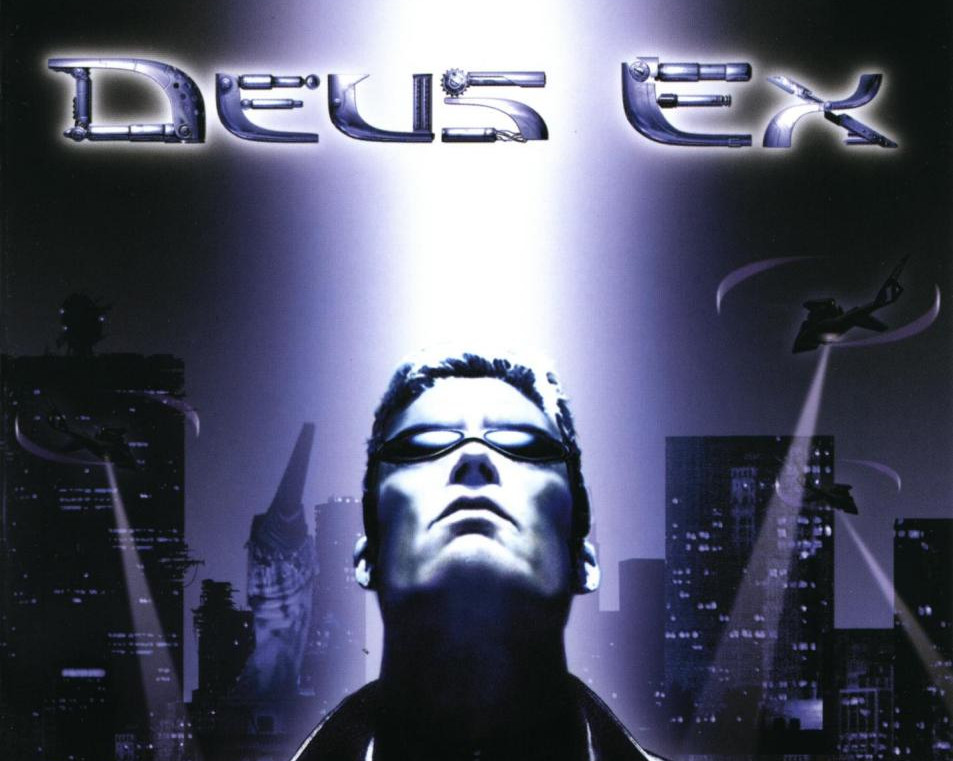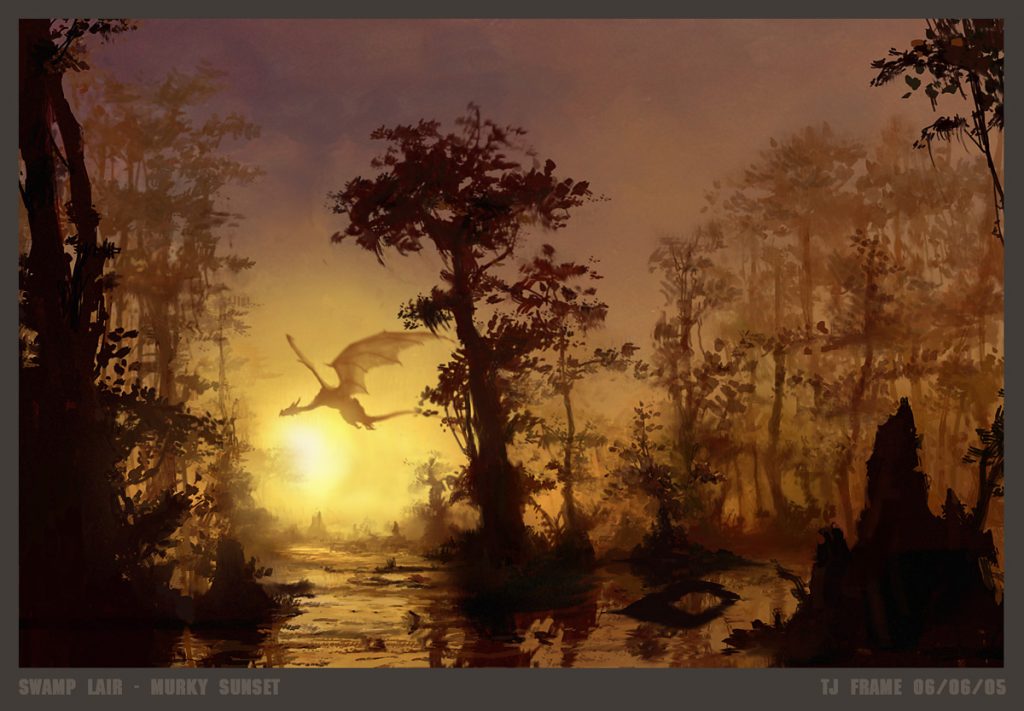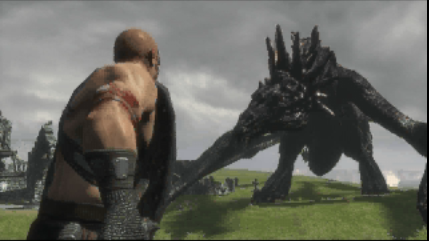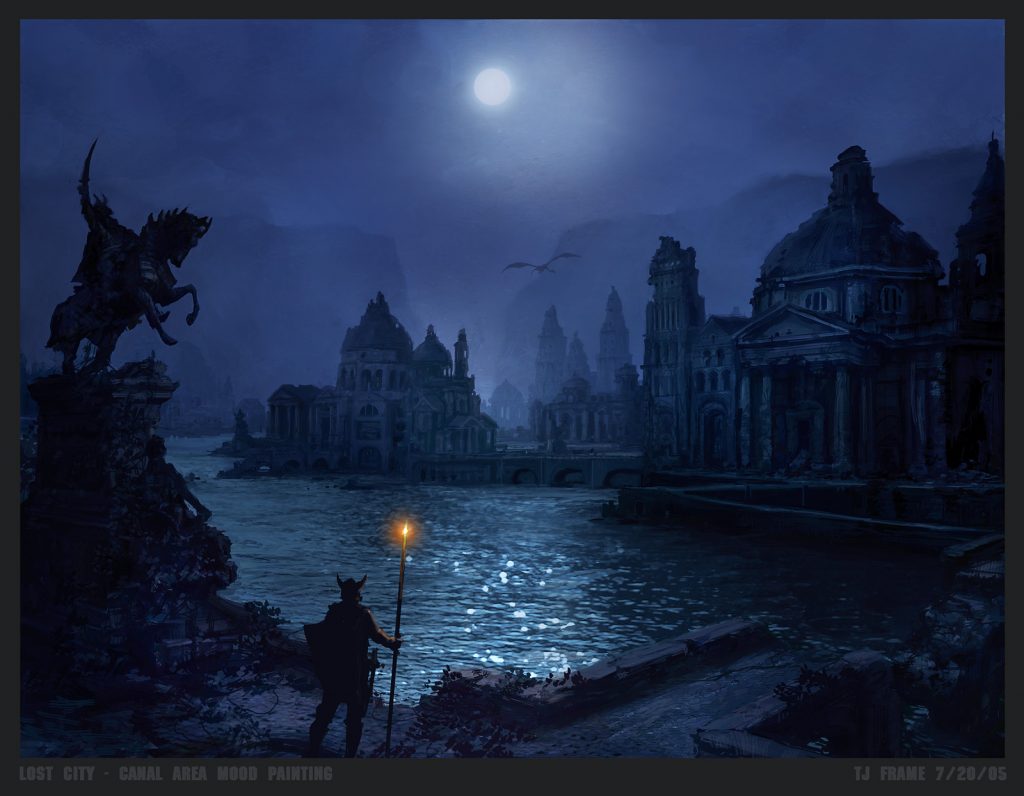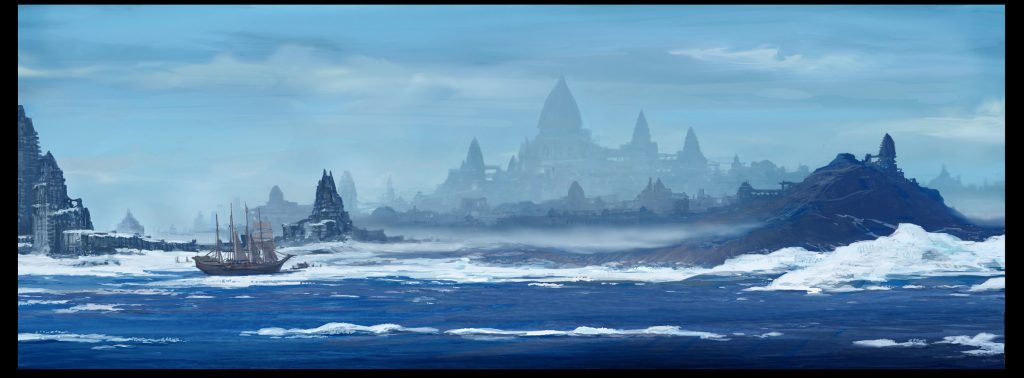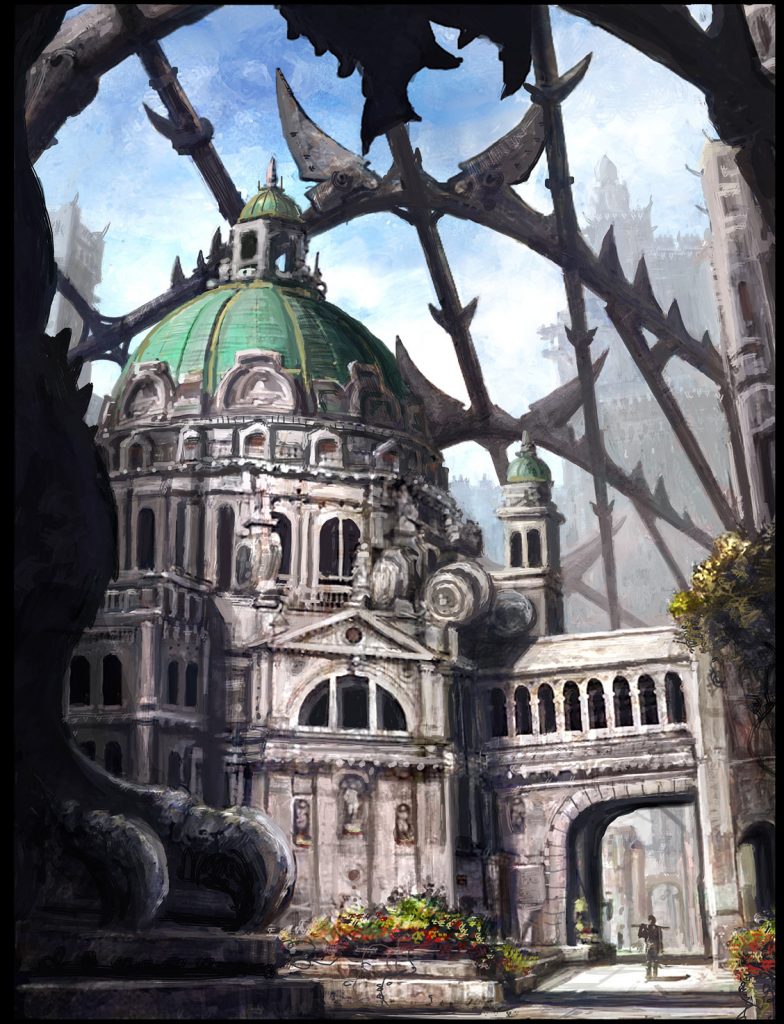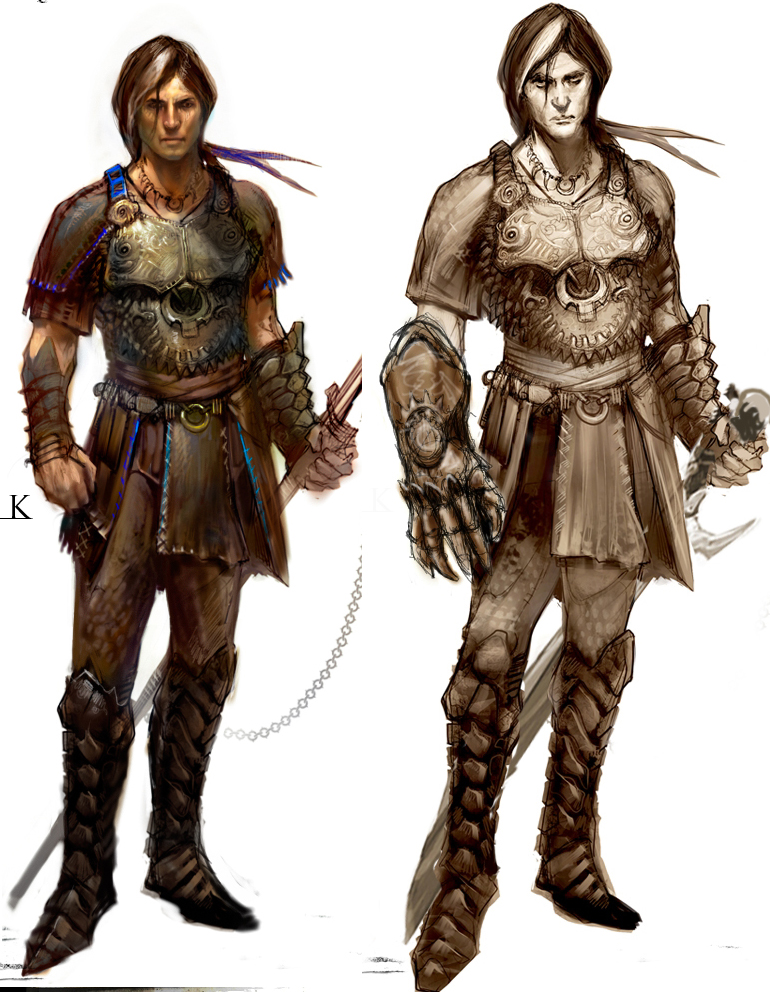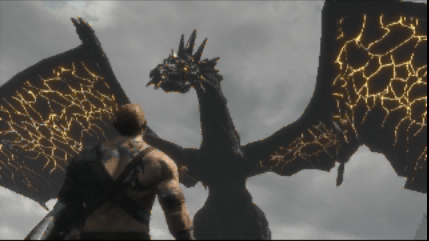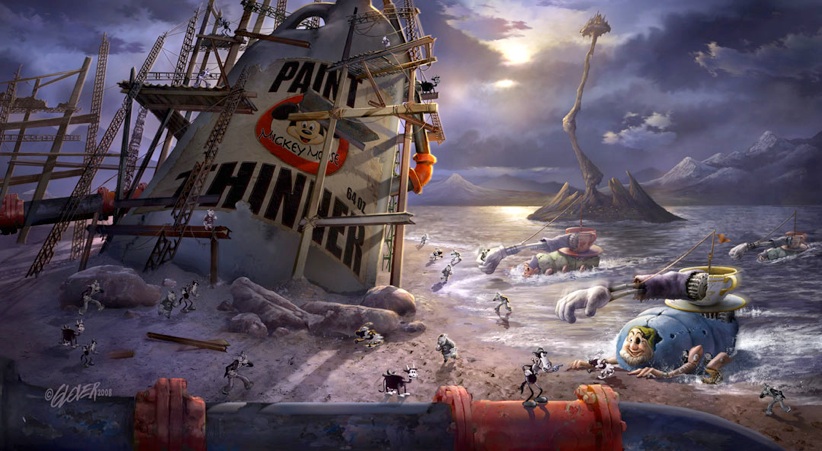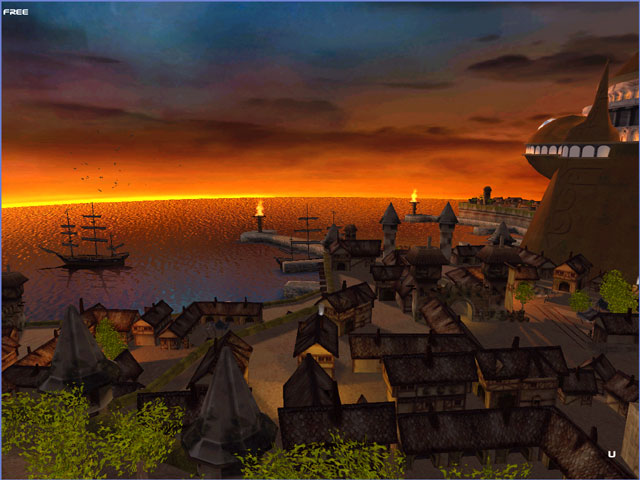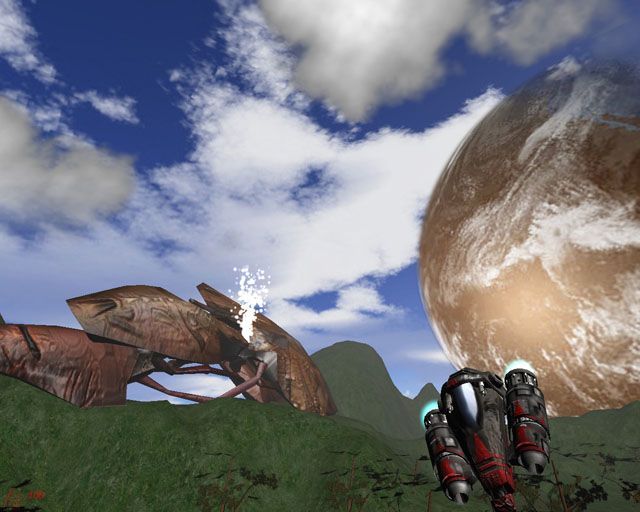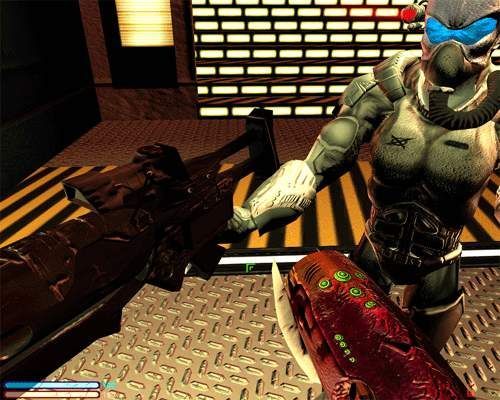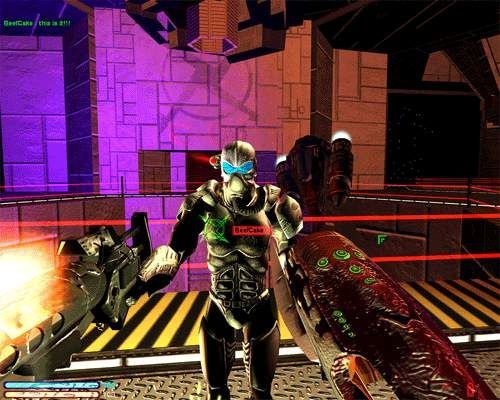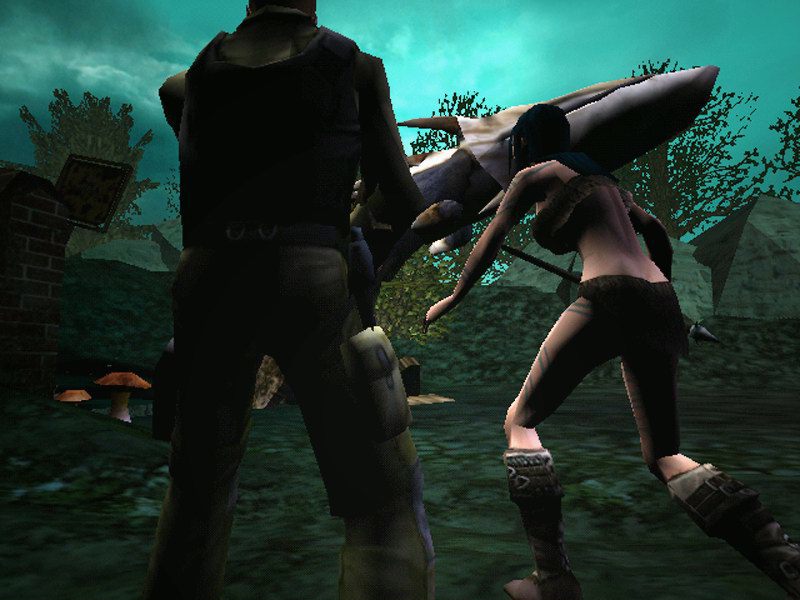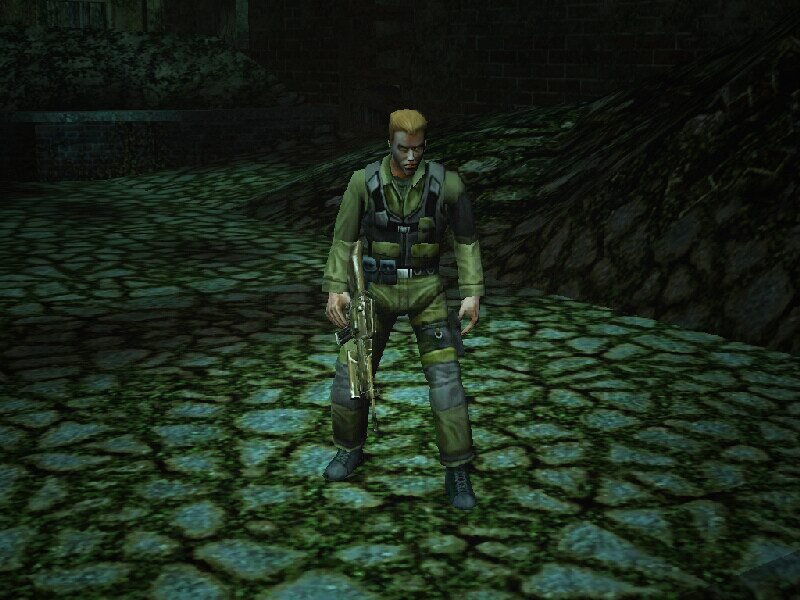Warren Spector entered the video game business in 1989 when he joined ORIGIN, co-producing Ultima VI and Wing Commander, then producing two games in the Ultima Underworld series, Ultima VII: Serpent Isle, System Shock, Crusader: No Remorse and many others. His name soon became a legend for PC RPG fans.
In 1997, after a year as General Manager of Looking Glass Austin and producer on Thief: The Dark Project, Spector received a call from John Romero: it was the start of the new Ion Storm Austin team and the conception of another classic title, Deus Ex. As studio director, Spector later oversaw development of Deus Ex: Invisible War, released in December 2003, and Thief: Deadly Shadows, released in June 2004.
After such a massive number of well received games, he wanted to create something even more ambitious. During an interview with Games Radar in June 2012, he recalls the time when he quit working at Ion Storm:
“Here’s the thing: I left Ion Storm and Eidos in the spring of 2004, frankly because I felt out of place at that company. I was at E3 that year, and I remember looking around at all the games – I was showing Thief: Deadly Shadows, which I thought of as a slowly-paced, cerebral, genuinely mature sort of game. And I looked around and there was Crash ‘N’ Burn, the racing game about how big an explosion can you create, there was Hitman: Contracts, a game where this time you get to kill with a meathook, and over there was 25 to Life, a game about kids killing cops. I was like, oh my god, I can’t do this. So I left. I had six months off, but really, all I was doing in that time was planning my next thing”.
In March 2005 Warren Spector officially announced his new company: Junction Point Studios, a team named after a cancelled online RPG he was working on during his last months at Looking Glass. He founded the studio with the help of another former employee of Looking Glass and Ion Storm: Art Min.
Art worked on System Shock and Terra Nova, before leaving Looking Glass in 1996, to co-found Multitude and heading up the creation of FireTeam, the first online-only, voice-enabled, squad-based tactical game. Following the release of FireTeam, Art joined Valve Software as Online Content Group Project Manager, where he managed the acquisition of the Counter-Strike IP. In 2003, Art joined Ion Storm Austin to work as project director on the third, lost installment in the Deus Ex series, before following Warren Spector in his new adventure.
From this short introduction, it’s easy to understand how the hype was huge for Junction Point Studios: with such important names gamers were waiting to see what they could conceive as their first project. During the early days of Junction Point, Spector and Min conceived various original games to pitch to different publishers. One of these pitches was titled “Sleeping Giants”, an ambitious open world RPG in the vein of The Elder Scrolls: SKYRIM, set in a fantasy universe originally proposed for DC Comics by Spector and his wife. As told by Spector to Variety.com in November 2009:
“[it was] a big, BIG fantasy game that I had been wanting to do for about 15 years. My wife and I created a world and a whole story arc for DC comics. They decided not to pick it up. I loved this world and the characters we had created.”
As stated in the Sleeping Giants proposal document, their main objective was to create a fantasy game that meld the best elements of some of the most successful and innovative games of the mid ‘00s. Imagine the ethical choices of Fable or Knights of the Old Republic combined with the freeform gameplay of Grand Theft Auto, a pinch of immersiveness and wonder from Thief or Underworld. Wrap it up in a story as sophisticated, adult and relevant as Deus Ex.
That was the ambitious plan for Sleeping Giants, wanting to offer state of the art freeform gameplay with myriad of choices and unique consequences as players explore deeply simulated cities, towns and dungeons however they choose.
With Sleeping Giants, Junction Point’s goal was to hit the heart of the Bioware and Blizzard audiences, taking inspiration from the Diablo, Neverwinter Nights and Baldur’s Gate series. By looking at the game today, we can say that it looks a lot like SKYRIM, but it was created more than 5 years before Bethesda’s popular action RPG, in a time when Oblivion was not published yet. Dragon Age: Origins and Dragon’s Dogma, two other similar titles, would only release respectively in November 2009 and May 2012. Sleeping Giants could really have been a revolutionary RPG for its time, if only completed.
The project’s potential did not go unnoticed by publishers and soon Junction Point signed a deal with Majesco Entertainment, when the company was trying to heavily enter into the AAA market, with projects like Advent Rising (released in May 2005), Psychonauts (released in April 2005) and a lot of movie tie-ins.
It’s not clear when full work on Sleeping Giants was started, but initially a series of concept arts were created using talented freelancers, to show the feeling of the game. After a while Junction Point were able to hire more developers and they developed an early prototype using Unreal Engine 3, a tech needed to run both indoor and outdoor worlds, from cramped, claustrophobic dungeons to city and countryside locations.
Their plan was to develop the game on PC along with the two (at the time yet unreleased) “next-gen” platforms: PS3 and Xbox 360. Dragons would have had a major role in Sleeping Giants’ lore and Junction Point took notes from other dragon-focused games as Drakan, Panzer Dragoon and the Breath of Fire series. The team wanted to create a powerful, adult story featuring a unique central character – a young man, born of a dragon mother and a human father. The blood of dragons flows through his veins, giving him great power, at the expense of his humanity. He finds himself torn between human and dragon forces at war with one another and must choose who to befriend and who to oppose.
The survival of one or the other species hangs in the balance of Sleeping Giants’ world. Reading the backstory featured on the game’s proposal gives us a quick look of the main settings and characters promised for the game:
“For nearly fifty years, man and dragon battled for dominion over the world. Dragon aeries were razed. Dragons were killed in vast numbers. Nests were torched. Infant dragons were cut down and left for scavengers. But mankind’s losses were worse – the number of human dead was staggering. With defeat seemingly at hand, the mages of the world came to mankind’s leaders with a terrible plan. They could, they claimed, bring an end to all dragon life by conjuring a great magick – The Great Fire. This was humanity’s only hope.
The destructive spell did end the dragon threat, as promised – but not without cost. The effort depleted the world’s magical energies almost completely and spawned a winter from which the world has yet to recover, despite the passage of time. The world may well never see summer again. For 200 years, no human had seen a dragon. Though not quite the stuff of legend, the ancient enmity between man and dragon was hardly the stuff of everyday life. Many years have passed since that great and grave moment in human history and, recently, some in the outlying territories claim to have seen dragons in flight once more.
In point of fact, the magical event that supposedly killed the dragons – The Great Fire – did nothing of the kind. Yes, it destroyed many of them but its main impact was to consume so much magical energy that many dragons – being dependent upon magic for their existence, the way humans depend on air and water – simply went quietly, secretly dormant. A handful of dragon eggs, hidden in the most inaccessible dragon nests, survived the events that killed their parents. Adults in the later phases of life – a time when dragons isolated themselves from their own kind and the rest of the world – were locked in sleep in places so remote no human could find them, no human magic touch them.
Most intriguingly, a handful of hatchling infants were enchanted by their elders, changed into human form. Their memories were stripped, leaving them unaware of their true natures. These few were left to be raised by humans until a time when the world would be safe for dragons once more. As the story begins, two things are happening – human mages have noticed noticeable upswings in the level of magical energy in the world, a natural result of the passage of time and of strict controls on the expenditure of magical energy. Mages, mostly descendants of once powerful men and women, are making a push for renewed political power.
Ancient magical artifacts, long useless, are once again sought after and fought over. The second impact of a magical resurgence? The surviving dragons are waking up. In the Northlands, where the Great Fire was unleashed, a hatchling has reportedly been captured, butchered and burned. In the Disputed Lands, a full adult dragon is said to have razed a town before disappearing. It’s unclear whether these events really took place but that they are being reported at all is disconcerting. Antonio Balthasar, the player character, is the offspring of an enchanted dragon mother (the Lady Tecla) and a human father, now dead.
Early in the game he is unaware of his true nature, thinking himself a normal human – an adventurer in the employ of the wealthy Tecla. During the course of the game, he learns that Tecla is his mother and that she is one of the dragon hatchlings, enchanted years ago into human form. From that moment on, he finds himself increasingly enmeshed in the growing conflict between humankind and the dragons. Will Antonio work to restore dragons to power? Will he fight for humanity, even if it means an end to magic and to dragonkind? Or will he take the middle path and bring peace to the two warring factions? Each player will make his or her own choice.”
The story was planned to be told in a series of self-contained episodes through the whole game, taking anywhere from 30 minutes to three hours to play to completion. Each episode, though self-contained, would be part of the larger, overarching plot. The world of Sleeping Giants drawn inspiration from Renaissance Italy, notably Venice, with its distinctive canals and bridges. The central city in the game would feature notable landmarks of the real Venice, with its canals, the Doge’s Palace, the mysterious cemetery island of San Michele, St. Mark’s Plaza… now, imagine dragons wheeling overhead and magical lamps reflecting off the ice of frozen canals.
This was meant to ground the experience for players: one of the most popular elements in Deus Ex was the opportunity to explore places like the Statue of Liberty and the Paris catacombs. The outlying areas of Sleeping Giants would recall Tuscany, with its magnificent villas and vineyards, or Rome, with its ancient ruins and enduring majesty. Junction Point also wanted to integrate Eastern European influences into the mix, with that region’s confluence of Occidental and Oriental art styles, as the moorish Spain, itself a blend of Western European and Muslim culture. Even the frozen northlands of the gameworld would draw from real world references, notably the desolate Siberian Steppes, the majesty of St. Petersburg, the mystery of the Kremlin in Moscow.
Just as the game’s world was inspired by the real world, so were its human races. The team hoped to offer a diverse set of characters, with racial and cultural diversity, with Caucasian and Black characters, Asians and Arab. The protagonist, affected by his awakening dragon blood, would also change his physical characteristics that, when angered, let slip glimpses of his heritage. Under certain circumstances, it becomes apparent that Antonio is not entirely as he appears on the surface.
Gameplay would have also used the dragons’ lore for character development, choosing between human talents or dragon abilities. Players could choose different approaches to resolve the game’s quests and the game world would respond differently depending on their previous acts and demonstrations of dragon powers. There would be missions to help humans and ones to help dragons: we could become a slayer of dragons or a dragon-savior, an enemy of humankind or its most noble champion.
Skilled players could play the rogue, taking missions that suit their fancy regardless of who they help or harm. Junction Point’s concept of “open-ended” gameplay extended to the creation of a living, breathing world, with cities, towns, dungeons, wilderness areas and dragon aeries full of both story-specific and secondary quests.
During an interview with Gamasutra in March 2007, Spector said:
“The key for me is creating linked sandboxes and letting players explore those little narrative chunks on their own. I’ll determine why it’s important that you get through a door, but how you get through it, what happens and whether you kill, talk to or ignore everyone on the other side belongs to the player. That concept of sharing authorship is where the sweet spot of game narrative is. There are some things that I think we can do to take that to the next level, and things that can be done a couple of years from now that can take it to yet another level. The end goal for me now isn’t for me to allow players to play a movie, ride a roller coaster ride or provide a sandbox so they can do what they want, but is to find the compromise where I can have a dialog with each player virtually. That’s what’s exciting to me.”
Sleeping Giants was meant to be a fully sandbox experience: in some ways like GTA or Deus Ex but set in an (at the time) unprecedentedly interactive and reactive fantasy world. The cities, towns and dungeons would be open to freeform exploration and structured in such a way that let players to choose, plan and execute their own missions. From recovering quest items to destroying towns and dragon aeries, from deliveries to thefts, from protecting NPCs to killing them, from protecting wild creatures to killing rampaging monsters.
Many of the wilderness areas and dungeons would have been auto-generated by a “Dynamic Gameplay System” that would fill them with new enemies, items and events to experience each time players would access to them. With a planned budget of about $20 million and an estimated shipping date in early 2008, the team knew that their project was an ambitious and risky one.
At first Majesco was supporting the project with their resources, but after Advent Rising, Aeon Flux, Bloodrayne 2 and Psychonauts heavily flopped, the publisher abandoned Junction Point and cut off Sleeping Giants. Majesco’s previous investment in expensive projects and tie-in games made them to lose a lot of money and (false) rumors about the company’s bankruptcy started to spread in July 2005. Their stock fell down more than 50%, their CEO Carl Yankowski resigned and the company was sued by shareholders. Their net revenue in 4Q 2005 was about $50 million less than the previous year, they cancelled the planned Taxi Driver and Ghost Rider tie-in games, canned Terminal Reality’s Demonik and 20% of their staff had to be laid off.
A huge game like Sleeping Giants, still in early development with a few years and millions of dollars to invest to complete, did not have a chance to survive to Majesco’s economic collapse. Junction Point were able to re-acquire the rights for Sleeping Giants and kept working on it while they were searching for a new publisher. In 2006 they worked for a while on a new Episode for Half Life 2 thanks to a deal with Valve. As explained by Spector in a Reddit AMA:
“Junction Point had a project cancelled. There was no money. Basically, Valve came in like a white knight and offered us some work on a Half Life episode set in a part of the Half Life universe that hadn’t been explored deeply”.
Unfortunately Junction Point’s Half Life Episode did not last long, but luckily in the meantime they found another collaboration. In March 2007 the studio was composed of about 24 people and during an interview with Eurogamer Warren Spector said that they were working on two IP:
“One of them we’re working in collaboration with a fellow you would have heard of out of Hollywood and one of them is based on a game-world that I created about 15 years ago with my wife. I’ve been waiting for the technology to catch up with the ideas in there”.
The “Hollywood IP” was a project titled “Ninja Gold”, a modern-day ninja action adventure in collaboration with movie director John Woo: another Junction Point game that never seen the light of day. During another interview with Gamesradar in June 2012, Spector recalls what happened during that time:
“Nine months of work and the publisher goes away, six more months and another publisher goes away, a year after that and another publisher goes away. And so I’m going, what the heck? I never took any time off – I was always out talking to publishers to get a deal. […]
It was interesting, because I had a bunch of publishers interested in Sleeping Giants, my epic fantasy game, and in Necessary Evil, my near-future science fiction Deus Ex-with-the-serial-numbers-filed-off game, but my agent told me to talk to Disney. Now I’m the biggest Disney fan in the world, but I said no. They’re not going to be interested in Ninja Gold, they’re not going to be interested in Necessary Evil, they’re not going to be interested in Sleeping Giants. They’re just not.
And he said “Just talk to them. They’re changing.” And they weren’t at all interested in what I was trying to make at the time, but they asked me if I was interested in doing a Mickey Mouse game. So picture yourself: huge Disney fan, sitting in a room full of Disney people surrounded by Disney-ish stuff, and they say “How would you like to play with the most recognizable icon on the planet Earth?”
And I said no, because I don’t make games for kids – Disney, in my view, had done a very good job of positioning Mickey as a character just for kids. And they said “We want you to make the Mickey game that you want to make. Make Mickey a hero for the twenty-first century.”
Most of you probably knows what happened next. In July 2007 Walt Disney Co. officially acquired Junction Point Studios, to make them work on the Epic Mickey project. Spector’s vision for Epic Mickey was way different and darker than what was released in November 2010 as the final Wii game, but that’s a story for another time.
With the acquisition of Junction Point, all their previous IP were canned, to switch their efforts on the Mickey Mouse game. Sleeping Giants was lost and forgotten to make space for a more popular franchise. After releasing Epic Mickey 2: The Power of Two in March 2012, Disney decided that they did not need Junction Point anymore and closed down the studio in January 2013.
Unfortunately it seems that this time Spector was not able to reacquire the rights for Sleeping Giants or their other concepts. In May 2016 Spector wrote on Twitter:
“Since Disney acquired @JunctionPoint they own my near-future action, modern day ninja & epic fantasy concepts. It’d be nice to get ’em back”.
This article was originally published in 2016 in our book Video Games You Will Never Play.
Images:
Videos:

